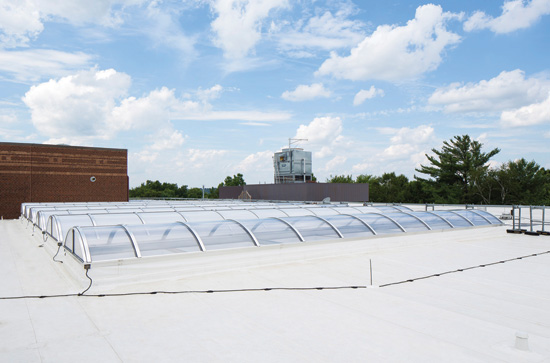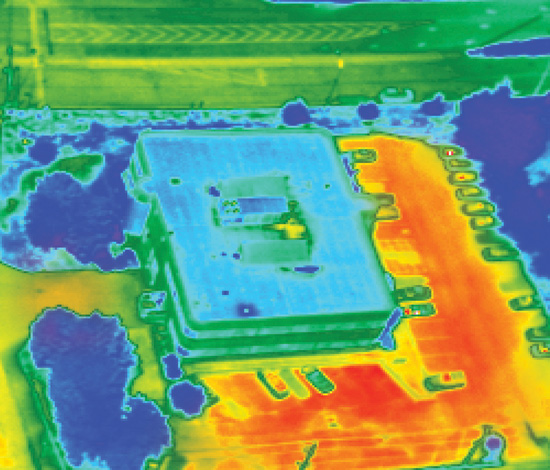The Architect’s Guide to Specifying Sustainable Single-Ply Roofing Membranes: NSF/ANSI 347

Photo courtesy of Duro-Last
The service life of a product or material could be the most important factor in sustainability.
Membrane Durability: How Long Will It Last?
While one could argue which of the criteria in this multi-attribute assessment is most critical, this one could well trump them all. After all the planning, raw material sourcing, manufacturing, packing and procedures are accounted for, if the product does not have a robust service life, the claim to sustainability will be in doubt.
Indeed, the NSF/ANSI 347 standard awards a whopping 12 points maximum for membrane durability. But first, two prerequisites must be met: Is there a documented installer-training program? And is a post-inspection protocol in place and actively practiced? When a product has an NSF/ANSI 347 certification, no matter what the level, an architect or specifier can be assured that these two quality-control measures are in place. As anyone familiar with the design and building industries can attest, poor installation can defeat a product's performance, no matter the product's initial quality. It's useful to note that the companies earning this certification have proven these critical elements are in place.
For true sustainability, service life in the field is key, and the standard offers from 1 to 10 points for demonstrations, attested to by a competent third party, that the product functions in the field from 10 to 30 years.
The materials a roofing membrane is made out of can contribute to its durability. For example, PVC is known to be an extremely serviceable and durable material. PVC roofing membranes are flame resistant, highly flexible, extremely recyclable and deter bacterial growth—giving them a longer life on the rooftop.
Further points are available for reflectivity according to Energy Star or equivalent reflectivity criteria, as well as for a maintenance and quality management system, and field performance evaluation processes.
The Overall Picture—Corporate Accountability to Social Issues
For a membrane manufacturer to achieve an NSF/ANSI rating, the areas of concern reach far beyond the actual membrane. They also address wide-reaching issues of how the corporation is operated.
For any company or builder or designer whose own social responsibility standards include bans on these practices, specifying a NSF/ANSI 347-certified roofing membrane is one way to ensure compliance with key corporate values.
In addition, prerequisites include compliance —at all manufacturing plants where the membrane is being evaluated—with all applicable laws and regulations concerning collective bargaining, wage standards, working conditions and non-discrimination in employment.
A robust safety improvement program is also built into this standard, and companies are rewarded with points for a published safety improvement manual, annual reporting of accident and injury rates, and an annual summary of safety improvement activities.
Commitment to Community Investment
In another prerequisite that reaches far beyond the membrane material itself, this standard requires all companies deemed compliant or better to invest in communities in the form of grants and contributions within the communities where its products are manufactured and used.
These community activities, according to the standard might include:
• Donations of roofing materials or reimbursement of roof installation labor costs for community projects throughout the country where they are manufactured.
• Donations to service or other charitable organizations located within a 30-mile radius of any primary manufacturing or distribution facility.
• Donations to non-profit organizations associated with the roofing industry.
• Donations to roofing industry scholarship funds or direct scholarships for students in construction-related educational programs.
Innovation Rewarded
To encourage continued innovation that leads to increased environmental benefits, manufacturers of single-ply roofing membrane can earn up to 7 points in the standard for such activities. Additional points are available for exceeding the aggressive targets in the standard, in some categories such as increasing environmentally sustainable content, reduction of energy consumption, investment of capital in renewable energy at the manufacturing plant, reduced water consumption and minimization of waste materials.










